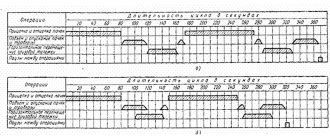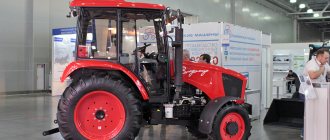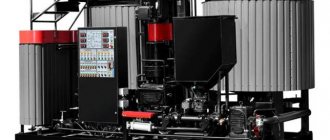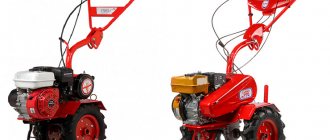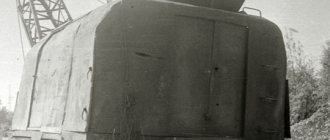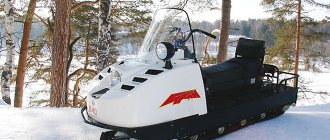machine hour - A unit of equipment working time that is used when calculating the costs of producing a specific product, for example, when calculating the services of auxiliary workshops. Machine hours per unit of production are one of... ... Technical Translator's Directory
machine hour - noun, number of synonyms: 1 • unit (830) ASIS Dictionary of Synonyms. V.N. Trishin. 2013 ... Dictionary of synonyms
machine hour - machine hour, machine hour, machine hour, machine hour, machine hour, machine hour, machine hour, machine hour, machine hour, machine hour, machine hour, machine hour (Source: “Complete accentuated paradigm according to A. A . Zaliznyaku") ... Forms of words
machine hour - machine hour as, a, plural. h. y, ov ... Russian spelling dictionary
machine hour - (2 m); pl. mashi / but hours /, R. mashi / but hours / in ... Spelling dictionary of the Russian language
machine-hour - , a, m. A unit of measurement for the amount of machine work. Bukchina, 64 ... Explanatory dictionary of the language of the Council of Deputies
machine hour - machine / o / hour / ... Morphemic-spelling dictionary
MACHINE-E - MACHINE. and MACHINE. The first part of complex words with meaning: 1) relating to a car, machines (in 1 meaning), for example. machine counting, machine supply, machine hour; 2) relating to a car, machines (in 3 meanings), for example. car owner, car rental... ... Ozhegov's Explanatory Dictionary
machine. - car. and MACHINE. The first part of complex words with meaning: 1) relating to a car, machines (in 1 meaning), for example. machine counting, machine supply, machine hour; 2) relating to a car, machines (in 3 meanings), for example. car owner, car rental... ... Ozhegov's Explanatory Dictionary
GOST 4.474-87: System of product quality indicators. Construction tower cranes. Nomenclature of indicators - Terminology GOST 4.474 87: System of product quality indicators. Construction tower cranes. Nomenclature of indicators original document: 1.1.3. Reach (ST SEV 723 77), m: l3 Definitions of the term from various documents: Reach 1.1.4. Height... ... Dictionary-reference book of terms of normative and technical documentation
Calculation of hourly operating productivity. In the absence of standards, operational performance can be determined based on technical:
where is Wh
— hourly technical productivity, determined by generally accepted formulas, units. cont./hour;
kt
— coefficient of transition from technical productivity to operational productivity (from 0.4 to 0.6).
For cyclic machines (excavators, scrapers, front loaders), technical productivity can be determined by the formula:
where q
— bucket volume,
m3
;
tс
— duration of the working cycle;
short circuit
— bucket fill factor;
cr
— soil loosening coefficient.
Calculation of the number of machine hours of equipment operation per year.
Due to the fact that construction equipment is mainly mobile and works in open areas, the number of machine-hours of its work per year is determined either by the formula:
where Tf
— annual fund of working hours of equipment, days;
tcm
— shift duration, hour;
kcm
— shift ratio of equipment;
Dp
— downtime in days for all types of maintenance and repairs (MRO), per 1 machine-hour of equipment operation, days/machine-hour;
dn
— duration of one relocation from object to object, days (
dn
=1);
Tob -
average duration of machine operation at the site, machine-hour.
The number of days spent in maintenance and repair depends on their frequency and duration, which are regulated by the relevant recommendations and instructions for the machines:
where dpi is the time the car stays in i
— type of maintenance and repair, days;
dni
— time for delivery to repair, waiting for repair and return delivery, days;
ai
- number of i types of maintenance and repairs per repair cycle;
kr
— coefficient of conversion of engine hours into machine hours;
Tr
— average life before the first overhaul, motorcycle hours.
where kdv
— the coefficient of machine engine utilization over time, defined as the ratio of the total engine operating time to the total duration of the shift;
kdm
— engine power utilization factor, shows the ratio of the average power developed by the engine during operation to its nominal value. These coefficients are set for various machines depending on the nature and mode of operation.
Number of maintenance and repairs per repair cycle
where tpi is the frequency of relevant maintenance and repairs, engine hour.
The duration of operation of equipment at a facility can be determined based on its hourly operational productivity and a given amount of work, or on average values recommended for various groups of machines [3]. If the hourly operational productivity of BT and NT is different, then the duration of work at the NT facility is determined by the formula:
Calculation of annual operating productivity.
The annual operational productivity of equipment is determined by the formula [4]:
where is vech
— operating hourly productivity, units.
cont./hour; Read also: Analogs of spare parts for the
TG
— number of machine-hours of equipment operation per year, machine-hour/year;
kpr
— a coefficient that takes into account downtime in the operation of equipment that is not taken into account in the hourly operational productivity (in calculations, you can take from 0.75 to 0.85).
In calculations, in addition to absolute values, productivity can appear in the form of the ratio of NT productivity to BT.
This ratio is called the productivity change factor:
3. Calculation of annual operating costs
Determination of the composition of current costs. Annual operating costs include all direct cost items and indirect costs (overheads). In general, the composition of current costs can be:
where Sze
— salary of the vehicle crew, tenge;
Szer
— wages of repair workers, tenge;
Szpb—
salary of those employed on relocation, tenge;
Sir
— costs for maintenance (maintenance) and current repairs without salary, tenge;
Sar
— depreciation charges for the complete restoration (renovation) of equipment, tenge;
Skr
— deductions for major repairs;
Scm
— costs of lubricants, tenge;
Smg
— costs of oil for hydraulic systems, tenge;
St. Petersburg
— costs for relocating equipment from site to site without salary, tenge;
Overhead costs include:
insurance payments for workers' insurance;
administrative staff salaries;
payment of sick leave;
payment of interest on the loan;
taxes included in the price of products.
Calculation of cost items.
Annual costs for the salary of the vehicle crew:
where l
— coefficient taking into account bonuses (on average 1.5);
STi
- hourly tariff rate
of the i -
th vehicle crew member, tg/h;
B
— number of crew members.
Annual salary of repair workers:
Where —
average hourly tariff rate for repair workers, tg/h;
lр—
coefficient taking into account bonuses for repair workers (
lр
=1.2);
Shopping center
- duration of the equipment between-repair cycle, machine - hour;
m
— number of types of maintenance and repair;
ai
— number of
i —
th type of maintenance or technical repairs for the repair cycle;
ri
— labor intensity
of the i
— th type of maintenance or repair, man-hour.
Duration of the overhaul cycle:
Wages of workers involved in the relocation of equipment:
Maintenance and repair costs include the cost of spare parts, repair materials, etc. Due to the complexity of accounting for these costs in economic calculations, their average values are determined and their value is taken as a share of the wages of repair workers:
where ker
— coefficient of transition from wages to costs for maintenance and repair (
ker
= 1.35).
Annual contributions for renovation:
where P
— standard depreciation charges for renovation, %.
Annual deductions for major repairs:
where is Acre
— depreciation standard for the Kyrgyz Republic, %.
Annual fuel costs for equipment with an internal combustion engine (ICE):
where WTI
— consumption of
the i
— th type of fuel for 1 machine-hour of work, kg;
ЦTi—
price of 1 kg of fuel
of the i
type;
Tri
— the number of machine hours of equipment operation per year using the
i
type of fuel;
R
— number of types of fuel used.
Hourly fuel consumption:
where Nеn
— rated engine power, hp;
qen
— specific fuel consumption at rated power, g/hp. hour;
kN
— coefficient that takes into account changes in fuel consumption depending on the degree of engine power utilization (from 1.1 to 1.2).
Annual costs for lubricants: for vehicles with internal combustion engines
where is the coefficient of transition from annual fuel costs to lubrication costs (from 0.05 to 0.1);
Annual hydraulic oil costs for hydraulically driven equipment:
where Vgs
— hydraulic system capacity, l.;
— volumetric mass of oil, kg/l.;
CMG -
wholesale price of oil, tenge/kg;
kd
— coefficient that takes into account adding oil during operation (
kd
= 1.5);
tmg
— frequency of oil changes in the hydraulic system, machine-hour (usually done with technical equipment).
Annual costs for relocation of non-stationary equipment (without wages):
where Sper
— costs for one transportation from object to object, tenge.
4. Calculation of economic efficiency indicators for introducing new technology
Determination of additional profit. Additional profit from using one machine during the year is determined by the formula:
where is the average reduced cost per unit of production, tg/unit prod.
Average present costs (average cost) per unit of production:
where C
— annual present costs, tenge;
B
- annual production volume (annual operational productivity of equipment), units. cont./year The annual present costs (cost) for the period of repayment of the advanced capital (loan) are determined by the formula:
Where -
coefficient of reduction of capital investments by the time factor (discount factor);
capital investments, tenge;
—
specified repayment period of the advanced capital, years;
a coefficient that takes into account the minimum acceptable profit for the enterprise (minimum total profitability);
knds—
coefficient taking into account value added tax, which is 12% of total annual operating costs (
kVAT
= 0.12).
Read also: Where to put an exclamation mark for a novice driver
The discount factor is calculated using the formula:
where E-
capital discount rate (simplified - bank interest);
t-
period under consideration, years.
The coefficient taking into account the minimum acceptable profit for the enterprise is determined as follows:
where is the coefficient taking into account corporate tax, ().
Calculation of additional indicators of economic efficiency. Reduced fuel consumption:
where WУТ
— specific energy intensity (fuel consumption), kg/m
3
.
where WT
— hourly fuel consumption, kg/hour;
Wh
- hourly operational productivity, m
3
/ hour.
Actual payback period for additional capital investments:
The results of calculating economic efficiency indicators from the introduction of NT are summarized in the final table (Table 4.1).
Table 4.1 - Results of calculating economic efficiency indicators from the introduction of NT
You can find out about the mileage of a car engine, ships, agricultural machinery, pump drives, diesel generators or other stationary devices running on motors by assessing the true wear of the unit. When determining the service life, the engine hours are taken into account first, since this parameter affects the performance and recommendations for the operation of a specific vehicle model or device. The measurement is performed in the same way for different units installed on vehicles, as well as those operating stationary. Due to the fact that mileage indicated in kilometers does not reflect the actual wear pattern of engine components, engine hours are used for a more accurate determination.
Information about direct wear and tear is important for monitoring the performance of the engine, accurately determining the timing of maintenance, repairs, replacement of consumables and structural parts, etc. The exhaustion of the service life brings the time of maintenance closer, so information about engine hours allows you to monitor indicators and indicates the need to change consumables. Each engine has different characteristics, so there are no uniform standards for maintenance within a strictly designated period; in the technical documentation for the equipment, the manufacturer specifies replacement periods, but in reality they can vary depending on operating conditions.
Calculation of machine hour cost
The standard value of the cost of a machine hour for the first group of equipment is 6 rubles, the second - rubles, the third - 4 rubles.
Calculation of the reduction coefficient for each group of equipment.
The total number of reduced machine hours per product is calculated.
A: 50*1 + 30*1.67 + 35*0.67 = 123.55 reduced machine hours
B: 15*5 + 5*1.67 = 23.35 reduced machine hours.
Determining the rate of one reduced machine hour machine hours
140000/ (123.55*150 + 23.35*250) = 5.74 rub.
Determining the amount of RSEO included in the cost of the product
709.2*150 + 134*250 = 140,000 rub.
The method of distributing indirect costs “in proportion to revenue” is that the indirect costs of the enterprise for the reporting period are written off to the cost of various types of products in proportion to the revenue received in this period for these types of products.
The fourth method is used to allocate business expenses. It consists in the distribution of commercial expenses between different types of products in proportion to the production cost of the products.
6.4. Factors for reducing production costs
Engine hour and machine hour - what's the difference?
Many novice users of agricultural machinery confuse these concepts, believing that one engine hour is 1 machine hour of work. In fact, the difference between these terms is significant. One engine hour should be understood as a conventional unit, which corresponds to a certain number of revolutions of the internal combustion engine crankshaft at a nominal number of revolutions.
A machine hour is a term that refers to a unit of working time of agricultural equipment that is needed to calculate the costs required to produce a particular product. This value is most often used in medium and large agricultural enterprises, the technical composition of which includes a certain amount of equipment. The use of this term allows company management to calculate the costs of soil preparation, sowing or planting crops, harvesting and other work performed. An example of such a calculation can be seen in the table prepared by one of the agricultural enterprises.
To calculate costs, data is used on employee remuneration, the amount of equipment involved, the purchase and installation of spare parts and the fuel that had to be spent on refueling the machines. After this, the resulting amount is divided by the number of hours of real time spent on completing the entire amount of work. As a result, the management of the enterprise receives close to accurate data on the costs of work, and can predict the approximate cost of work that needs to be performed in the future.
It must be remembered that 1 machine hour for a gasoline and diesel engine are different concepts. As is known, agricultural machinery with diesel internal combustion engines consumes less fuel than vehicles with gasoline engines. Accordingly, in units with diesel engines, one machine hour will have lower costs for performing work.
How to develop your own standards
Many companies use road transport in their activities. When operating vehicles, costs inevitably arise for the purchase of fuels and lubricants. There is currently no strictly standardized write-off procedure for commercial organizations established by the state, and the organization has the right to establish its own by issuing an order on fuel consumption standards. The need for rationing is dictated by the requirements of regulatory authorities: any costs must be justified and documented. On the other hand, setting fuel consumption according to clear standards allows responsible persons to control its purchase.
Calculation of the number of reduced machine hours per product.
1. Technological equipment of the cost center is divided by type (lathe, milling, etc.).
2. Within each group of equipment, the standard value of RSEO for 1 machine hour is determined.
3. For one of the equipment groups, this value is taken as the base value.
4. The reduction coefficient is calculated for each group of equipment.
5. The total number of given machine-hour coefficients per product is calculated.
| Example: Distribute RSEO between products A and B in proportion to the machine-hour coefficients. The amount of RSEO for the workshop for the month is 140 thousand rubles. In a month, the workshop produced 150 products A and 250 products B. The equipment in the workshop is grouped into three groups. The standard time for manufacturing product A on the first group of equipment (ta1) is 50 standard hours, on the second group (ta2) 30 standard hours, on the third group (ta3) - 35 standard hours. For product B: tb1 = 15 standard hours, tb2 = 5 standard hours. The first group of equipment is basic. The standard value of the cost of a machine hour for the first group of equipment is 6 rubles, the second - 7 rubles, the third - 4 rubles. Solution: Calculate the reduction coefficient for each group of equipment. for the first: 6/6=1; for the second: 7/6=1.67; for the third: 4/6=0.67. The total number of reduced machine hours per product is calculated. A: 50 × 1 + 30 × 1.67 + 35 × 0.67 = 123.55 normalized machine hours. B: 15 × 5 + 5 × 1.67 = 23.35 reduced machine hours. Determining the rate for one reduced machine hour: 140,000/ (123.55 × 150 + 23.35 × 250) = 5.74 rubles. |
How to calculate the number of machine hours?
Determination of the amount of RSEO included in the cost of the product: A: 5.74 × 123.55 = 709.2 rubles. B: 5.74 × 23.35 = 134 rubles. Check: 709.2 × 150 + 134 × 250 = 140,000 rub.
The method of distributing indirect costs “in proportion to revenue” is that the indirect costs of the enterprise for the reporting period are written off to the cost of various types of products in proportion to the revenue received in this period for these types of products.
To plan costs for the entire enterprise or a specific division is used . The estimate reflects the costs incurred in a certain period (month, quarter, etc.) in the context of economic elements or cost items. Forms and types of cost estimates are developed by the enterprise independently. It is important to link costs to where they arise.
When drawing up estimates, it is necessary to distinguish between the concepts of “ cost of marketable products ” and “ cost of goods sold ”
The cost (production) sold is calculated using the formula
Srp = Stp + GPnp - GPkp,
where Срп is the cost of goods sold, thousand rubles;
Stp – cost (production) of commercial products, thousand rubles;
GPnp – finished products in warehouse at the beginning of the period, estimated at production cost, thousand rubles;
GPkp – finished products in warehouse at the end of the period, estimated at production cost, thousand rubles.
The cost of marketable products differs from production costs by the amount of changes in deferred expenses and work in progress.
Stp = Spp + RBPnp + NZPnp - RBPkp - NZP kp,
where Stp is the cost of marketable products, thousand rubles;
CPP – production costs, thousand rubles;
RBPnp – deferred expenses at the beginning of the period, thousand rubles;
WIPnp – work in progress at the beginning of the period, valued at cost, thousand rubles;
RBPkp – deferred expenses at the end of the period, thousand rubles;
Work in progress - work in progress at the end of the period, valued at cost, thousand rubles.
Used to plan expenses for a period of a year or more
method of proportional dependencies;
Factor method
method of expert assessments;
economic and mathematical methods.
Using the method of proportional dependencies, planned costs are calculated using the formula:
Spl = Sperb * Iv + Sposb,
where Spl – planned costs for production and sales of products, thousand rubles;
Recommended fuel consumption standards for 2018 © Standard calculation
| Norms for write-off of fuels and lubricants 2022 and 2022 in the table - Ministry of Transport of the Russian Federation For intra-garage trips and technical needs, technical inspections, adjustment work, running-in of car engine parts after repairs, monthly fuel consumption should not exceed 0.5 of the total amount consumed by the vehicles in use, in the absence of savings . text in the previous edition When working in extreme climatic and severe road conditions during seasonal thaw, snow or sand drifts, heavy snowfall and ice, floods, forest fires and other natural disasters for roads I, II and III categories up to 35, for roads IV and V categories up to 50. |
- for domestic transport until 2014;
- for foreign cars before 2008;
- for foreign brands from 2008 to 2014.
How many engine hours are in one hour?
Counting the engine hours spent by a tractor helps to understand the degree of wear on the most important moving mechanisms of the unit.
The formula used for the calculation is extremely simple and gives the tractor owner the following data:
Using this information, even a novice farmer can easily convert engine hours to real-time hours. It should be remembered that the final result of converting engine hours into real-time clocks is always slightly different for a gasoline engine and a diesel engine. The main reason for this is the higher power of the latter, which is why it spends a little less time on completing tasks.
Calculation of the number of reduced machine hours per product.
1. Technological equipment of the cost center is divided by type (lathe, milling, etc.).
2. Within each group of equipment, the standard value of RSEO for 1 machine hour is determined.
3. For one of the equipment groups, this value is taken as the base value.
4. The reduction coefficient is calculated for each group of equipment.
5. The total number of given machine-hour coefficients per product is calculated.
| Example: Distribute RSEO between products A and B in proportion to the machine-hour coefficients. The amount of RSEO for the workshop for the month is 140 thousand rubles. In a month, the workshop produced 150 products A and 250 products B. The equipment in the workshop is grouped into three groups. The standard time for manufacturing product A on the first group of equipment (ta1) is 50 standard hours, on the second group (ta2) 30 standard hours, on the third group (ta3) - 35 standard hours. For product B: tb1 = 15 standard hours, tb2 = 5 standard hours. The first group of equipment is basic. The standard value of the cost of a machine hour for the first group of equipment is 6 rubles, the second - 7 rubles, the third - 4 rubles. Solution: Calculate the reduction coefficient for each group of equipment. for the first: 6/6=1; for the second: 7/6=1.17; for the third: 4/6=0.67. The total number of reduced machine hours per product is calculated. A: 50 × 1 + 30 × 1.17 + 35 × 0.67 = 108.55 reduced machine hours. B: 15 × 1 + 5 × 1.17 = 20.85 reduced machine hours. Determination of the rate for one reduced machine hour: 140000/ (108.55 × 150 + 20.85 × 250) = 6.5131 Determination of the amount of RSEO included in the cost of the product: |
| A: 6.5131 × 108.55 = 706.997 rub. B: 6.5131 × 20.85 = 135.798 rub. Check: 706,997 × 150 + 135,798 × 250 = 140,000 rubles. |
The method of distributing indirect costs “in proportion to revenue” is that the indirect costs of the enterprise for the reporting period are written off to the cost of various types of products in proportion to the revenue received in this period for these types of products.
Production cost planning methods
Depending on the purpose of planning production costs, the calculation method and the budget planning method are used.
The calculation method of cost planning is a method of planning the cost of a unit of production according to costing items.
How to convert engine hours to kilometers
It is more correct to calculate the engine life in engine hours than in kilometers, but it just so happens that the mileage is indicated after which an oil change is recommended and other maintenance work on the unit is carried out. This leads to the next question, how many kilometers is 1 engine hour? Since the unit of measurement Mch is relative, it will not be possible to accurately calculate the number of hours worked by the motor based on the number of kilometers “behind your shoulders”; accordingly, the results will be relative. To perform such calculations, the speed of movement and the degree of load on the power unit are taken into account. According to the Order of the State Customs Committee of the Russian Federation dated October 2, 1996. No. 609 “On the introduction of annual standards for the consumption of motor resources (mileage) of motor vehicles”, the average indicator of one hour of operation of a machine driven by a motor not equipped with an hour meter will be equal to the following mileage:
When driving in difficult conditions (driving at high speeds, traffic jams, etc.), the number of engine hours increases, and the mileage does not keep up with their countdown, therefore, maintenance recommendations specified in kilometers (for example, 15-20,000 km) are irrelevant. These wishes of the automaker are more consistent with ideal operating conditions. It follows from this that it is necessary to take into account parameters that are closer to reality, that is, engine hours that show real wear. Thus, consumables most often have to be changed after half the recommended mileage. Calculation of engine hours can be found in the technical documentation for the car; information can also be obtained using the on-board computer (for some models).
Source
Is it necessary to apply fuel consumption standards of the Ministry of Transport of the Russian Federation: Regulatory regulation
| How to calculate the fuel consumption rate - Special equipment The Ministry of Finance of the Russian Federation made an official clarification on this matter in a Letter dated August 19, 2022 03-03-06 1 48789 it is reported that following the standards established by the Ministry of Transport is the right, and not the obligation of the entrepreneur. By fuels and lubricants, fuels and lubricants mean not only the fuel itself, which can be gasoline, diesel or gas, but also all kinds of lubricants and brake and cooling fluids. |
- for loaders with a lifting capacity from 1,500 to 1,800 kilograms - 1.7 liters per hour;
- for loaders with a lifting capacity from 2,000 to 2,500 kilograms - 2.5 liters per hour.
Methods for estimating consumption • Hw is the rate of fuel consumption for transport work, l 100 t.
How to calculate engine hours? Engine hour and machine hour - what's the difference?
Everyone knows how to approximately determine the service life of a passenger car engine - by mileage. Of course, it is important to take into account other factors, such as operating conditions (climate, road quality, load), but in general the condition of the engine is judged by the distance traveled by the car and is rarely mistaken. The more the car has driven, the more the engine has been “overclocked”, the more its components and parts are worn out, and the sooner they will require replacement or preventive maintenance. But how to calculate the engine hours and work volume of tractors, agricultural trucks, and snowplows? Most often, during operation, they travel a very short distance, but they experience a noticeable load. In order to correctly determine the degree of wear, you need to know what engine hours are on a tractor and other equipment and how to count them.
How are engine hours calculated?
The engine hour is a special unit of measurement of the load experienced by a running motor. It corresponds to one astronomical hour of crankshaft operation at idle or moderate speed (60 minutes at about 1500-1600 rpm). This indicator is not equal to mileage or operating time and is relevant primarily for small-capacity vehicles (motorcycles, including cross-country motorcycles), as well as special equipment, the operation of which is not assessed by the distance traveled.
There are different ways to calculate engine hours:
The engine hours show the load of the working tractor
Equipment, the amount of work of which is not calculated based on kilometers traveled, is equipped with a special meter that is connected to the spark plugs and reacts to sparks. This is the easiest and most reliable way to count engine hours on tractors, walk-behind tractors and other equipment.
Fuel and lubricants write-off rate calculation example - Legal matter... Calculation for buses
Moreover, the data must be compiled according to the WLTP Worldwide harmonized Light vehicles Test Procedures in accordance with the United Nations Global Regulations 15 Worldwide Harmonized Light Vehicle Test Procedures. When transporting goods by a cargo or cargo-passenger vehicle other than a dump truck1 without taking into account transport work in ton-kilometers, as well as when transporting technological equipment or cargo for which a consignment note is not issued, the linear fuel consumption rate increases by no more than 10.
| Basic NRT | This is the standard cost of fuel and lubricants. Installed separately for each brand of vehicle. Takes into account individual designs, curb weight, type of fuel consumed and other characteristics. The type of flow is applicable for standard, typified situations. |
| Transport NZT | This type of regulatory use is applied taking into account the characteristics of the transport operation of the unit. In essence, this is a basic standard, recalculated taking into account the carrying capacity, towing force, and the rated load of cargo or passengers. That is, a standard taking into account the performance characteristics of the car. |
| Operational NRT | This is a real cost standard, which is recalculated taking into account correction factors. These are basic and transport NRT, which take into account the operating conditions of the vehicle (terrain, climate, temperature conditions and other operating features). |
What are engine hours
An engine hour is a unit of measurement for the duration of engine operation and its reserve, taking into account all factors, including unstable ones. This parameter cannot be equated to one hour; under certain conditions it is equal to, more or less than a regular hour. When calculating, the operating modes of the unit are taken into account; the crankshaft revolutions are calculated on the tachometer. Since the engine hour does not have an exact concept of time, sometimes it becomes necessary to convert it to the usual astronomical hour, for example, in the case of planning maintenance.
Discounts on new cars!
Favorable loan from 9.9% Installment plan 0%
How to write correctly, engine hour or engine hour
If you always write correctly and do not make mistakes in spelling words, you should know that the abbreviation of the concept of “engine hour” is written as “engine hour”, “engine hour” or “motor hour”. Different dictionaries offer different spellings, this is due to the fact that, according to the rule, compound words of all types, to which this term refers, must be written together, but if we consider complex units of measurement, in this case the word already falls under the exception, therefore it is written through hyphen. Linguists have not come to a consensus, and, despite the fact that the continuous spelling is considered outdated, according to the Dictionary of Abbreviations of the Russian Language, as well as the Spelling Dictionary, “motochas” is correct to write. These types of abbreviations are also always written in lowercase letters.
Marketing component
For new cars, the oil change is dictated to us by the manufacturer, and this process miraculously coincides with the next maintenance. That is, we are somehow getting used to giving a lot of money when we come to the dealer in 15,000, they will tweak something for us and look at something, so here you are 6,000 - 10,000 rubles! EXPENSIVE, yes of course EXPENSIVE! Therefore, now drivers look at the service interval and the longer it is, it is considered better. I’ve already said about Europe - that it’s not uncommon for there to be 20-25,000 kilometers, because their prices for work are even higher.
BUT IS THIS CORRECT? Of course not. Moreover, now many car owners live in big cities with a lot of traffic jams and threshing engines in them; it is also worth adding auto starts in the morning or set on a timer (turned on by time or by ambient temperature).
And here you need to understand that the replacement should take place not according to mileage, but according to engine hours! And believe me, this greatly reduces the replacement interval in kilometers, by about half (but more on that a little later).
How many engine hours in one hour
It is believed that 1 engine hour can be equated to 1 hour of engine operation at idle speed, but this is a very approximate method. Idle speed varies between vehicles. Only in passenger cars the spread ranges from 500 to 900 rpm, and, for example, in the MTZ-80 tractor they can reach 1500 rpm. The crankshaft revolutions are displayed on the tachometer. The higher the speed, the faster the engine hour is consumed. Therefore, it is impossible to derive a single coefficient to find out how long the engine hour is. It all depends on the working conditions. For example, if a tractor or walk-behind tractor is running on light sandy soil with a cutter or potato planter, the operator will not need to maintain high speeds. And if the same tractor is pulling a truck out of a snowdrift or clearing wet snow, the load on the engine will be higher and the crankshaft will make more revolutions.
Why do we need fuel consumption standards?
When working in quarries (except for special quarry vehicles), when moving across the field, when hauling timber, etc.
on horizontal sections of roads of categories IV and V: for vehicles in running order without cargo - up to 20%, for vehicles with a full or partial vehicle load - up to 40%. (as amended by the order of the Ministry of Transport of Russia dated July 14, 2015 N NA-80-r) (see Asking a philosophical question like “why are there any norms for consumption and write-off of fuels and lubricants?” We won’t – we need them, period The main thing is not to get confused with the application of these standards. It should be noted that the purpose of the standards in accounting and tax accounting is not the same.
Accounting for purchased fuels and lubricants depends on the method of their acquisition.
If fuels and lubricants were purchased for cash, make the following entries:
DEBIT 71 CREDIT 50
— money was issued on account for the purchase of fuels and lubricants;
DEBIT 10 CREDIT 71
— fuels and lubricants are capitalized on the basis of an advance report provided by the driver;
DEBIT 19 CREDIT 71
— VAT on purchased fuels and lubricants is reflected;
DEBIT 68, Subaccount VAT calculations CREDIT 19
— “input” VAT on fuel and lubricants has been accepted for deduction.
Why are motorcycle watches needed and how are they useful for a biker?
Required in order to determine the most accurate operating interval of a bike, agricultural machinery and other types of transport. A special sensor that triggers every hour will help in the measurement.
If you can do the math, the biker can find out the most accurate degree of wear on the working engine mechanisms. It is also recommended to convert engine hours to kilometers to determine how much fuel is required to refuel the device.
To find out how many kilometers a motorcycle hour is, you need to look at the technical documentation for the bike, where the approximate value should be indicated. There is no single formula for calculation.
Conversion to kilometers
It is also not possible to derive an exact formula for what 1 engine hour is equal to in km. For passenger cars, it can be approximately equated to 12-14 kilometers of quiet driving at moderate speeds or idling the engine. Thus, 15 thousand km is the standard interval for changing oil and some other consumables - this is about 200–250 hours of engine operation.
When driving aggressively, driving on bad roads, transporting cargo or towing, which often requires using full engine power, the engine hours will be “used up” faster. And if the car is driven on busy streets or often idles warm up, these units of measurement become more than mileage. After all, the car is stationary, and the resource of the engine and some other units is consumed. That is why, when replacing consumables, it is better to focus on motorcycle hours rather than mileage.
Engine hour consumption is recorded by a special device.
The issue of accurate calculation is especially important for vehicle drivers working far from qualified assistance (in forest areas, facilities under construction, extreme recreation). They need to know the production so that they can replace or inspect parts in time to avoid unexpected breakdowns. If you can’t rely on mileage, it’s worth purchasing a meter.
Features of engine hour calculation
What the engine hours on a tractor are is quite simple to imagine if you understand how this parameter is fixed. At the moment the engine starts, a mechanical or electronic counter also turns on, which begins to record and remember the shaft speed using a special indicator. This device for determining the operating hours of tractors allows you to determine the duration of its operation for any period of time. But at the same time, the statement that 1 tractor hour is equal to one hour of real operating time is erroneous.
The calculation is based on the number of revolutions per minute. Consequently, it may differ several times under load and at idle. It turns out that if you count the engine hours, you can find out the approximate degree of wear of the moving mechanical components of the power unit. The formula for calculating them is quite simple and is based on the number of revolutions:
This diagram allows you to roughly clarify what the engine hour on a tractor is, depending on the intensity of its use.
Difference between engine hour and machine hour
Machine hours refers to the time it takes one machine to complete a job and also takes into account the number of machines. For example, if one machine clears the street of snow for six hours, it is said that six machine hours were generated. If two machines were assigned to the same amount of work and they cleaned the street in three hours, the work time is multiplied by the number of machines, and the result is again six machine hours. This indicator is important for distributing the load on the vehicle fleet and planning trips. Thus, the exhausted life of the engine is measured in engine hours, and the amount of work of the equipment as a whole is measured in machine hours.
Be sure to read: Do-it-yourself reduction gearbox for a walk-behind tractor
Oil and its resource
And now the most interesting thing is that no one will tell YOU at the dealer that certain lubricants need to be changed after a certain number of hours, even if your mileage is small, even very small.
WHY? Yes, because the protective properties are lost, that is, the engine will wear out quite a lot
Now there are only three types:
- This is a mineral water. By the way, it has almost disappeared in our country now; it should be replaced after a maximum of 150 engine hours (MH). After such a mileage, it also begins to burn, clogging your power unit.
- Semi-synthetic. It is worth changing it after 250 MH
- Synthetics. This is where the biggest difference is, there are cheap options (API SJ/SL, Mb 229.3, Vw 502, Bmw LL98) - replacing 250MCH. There are more advanced (improved crack) compounds (API SM/SN, Mb 229.5, Vw 502.00/505.00, Bmw LL-01) - here is a replacement for 300MCH. The best purified compounds (PAO approvals, Mb 229.5 Vw 502/505/503.01 Bmw LL-01) – 350 MCH. Thus, in this class of lubricants the run time is from 250 to 350 operating hours. There are others, but they are very expensive - ESTER, the price tag is 3 - 4 times higher than ordinary synthetics, it is simply not profitable to pour it.
How to calculate engine hours?
Methods for calculating engine hours for a diesel engine can be different - from simple mental calculation, with further recording of engine performance indicators, to the installation of special mechanical or electrical meters.
Naturally, the second option is more acceptable - this method of calculation is much more accurate and convenient. Using the counter indicators, you can more accurately monitor the degree of wear of the main operating components of a diesel engine. Data on this technical characteristic are specified in detail in the operating instructions.
Engine hour and machine hour - what's the difference?
Another important and no less common question is how to convert engine hours to machine hours. First of all, it should be clarified that this is almost impossible to do, since engine hour and machine hour are completely different concepts in their essence.
The engine hour is a conditional value that is determined taking into account the number of revolutions produced by the crankshaft of the tractor engine over a certain period of real time.
A machine hour is the amount of real time that had to be spent on manufacturing a specific product. In the case of agricultural machinery, this parameter indicates the time spent performing one or more actions - plowing, harrowing, sowing seeds or planting tuber crops.
It should be noted that the number of engine hours for gasoline and diesel engines is always slightly different. This is due to the fact that engines running on diesel fuel have more power - this allows you to carry out certain agricultural work faster. This feature is one of the main reasons why most manufacturers of agricultural machinery equip their units with diesel engines.
Often machine hours become an explanation of the difference between a tractor and a bulldozer. The fact is that the operation of a tractor, as a more maneuverable unit, gives the enterprise an important advantage in the form of accelerated completion of agricultural work. When using bulldozers, you have to spend much more time, which is why the latter are used much less frequently in agriculture.
Factors affecting fuel consumption
When operating a dump truck with a dump trailer or a truck tractor with a dump semi-trailer, fuel consumption increases for each ton of curb weight of the semi-trailer trailer and 50 times the weight of the cargo transported on the trailer with a load capacity utilization factor of 0.5 gasoline of no more than 2.0 liters; diesel fuel no more than 1.3 liters; LNG no more than 2.0 m3; LPG no more than 2.5 l; for the gas-diesel cycle, no more than 1.2 m3 of LNG and no more than 0.25 liters of diesel fuel. Current tax rules allow you to reduce the income tax base due to this write-off, but only if they are correctly justified in the relevant reporting documentation.
How to convert engine hours to kilometers
It is more correct to calculate the engine life in engine hours than in kilometers, but it just so happens that the mileage is indicated after which an oil change is recommended and other maintenance work on the unit is carried out. This leads to the next question, how many kilometers is 1 engine hour? Since the unit of measurement Mch is relative, it will not be possible to accurately calculate the number of hours worked by the motor based on the number of kilometers “behind your shoulders”; accordingly, the results will be relative. To perform such calculations, the speed of movement and the degree of load on the power unit are taken into account. According to the Order of the State Customs Committee of the Russian Federation dated October 2, 1996. No. 609 “On the introduction of annual standards for the consumption of motor resources (mileage) of motor vehicles”, the average indicator of one hour of operation of a machine driven by a motor not equipped with an hour meter will be equal to the following mileage:
Source
Online calculator of standard fuel consumption α
Each trucking company carries out standard calculations of truck fuel costs (calculated in l/100 km) independently. Just like electronic calculators on the Internet, the disadvantage of generally accepted calculation methods is that they are based on averages.
How the Russian Ministry of Transport has changed fuel consumption standards for 2022
The Ministry of Transport of the Russian Federation established fuel consumption standards on March 14, 2008 in the table of order No. AM-23-r. The latest edition of the document for 2019 is the order of the Ministry of Transport dated 04/06/2018 No. NA-51-r.
The department has expanded the list of cars, buses, trucks, vans and other vehicles. It also adjusted the fuel consumption limits, the table with the maximum values of winter allowances to the standards and the procedure for applying the increasing coefficient, etc.
